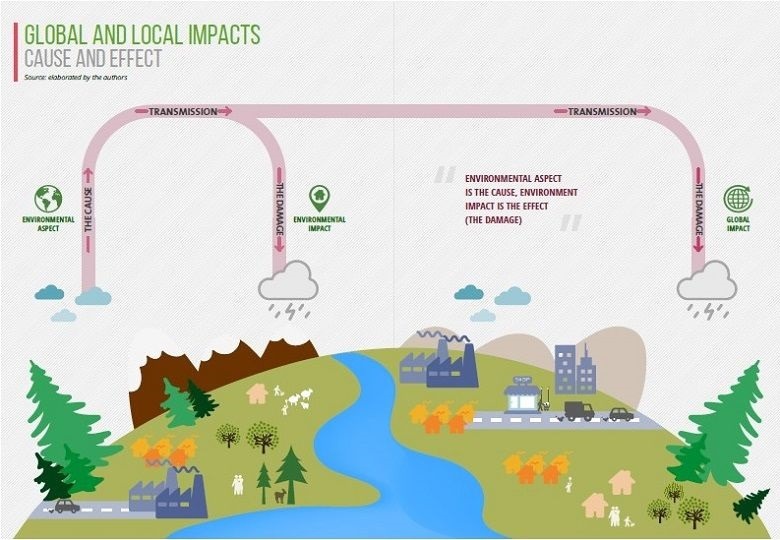
Environmental impacts: not all the same
Very often the term “environmental impact” confuses two phenomena that are actually quite distinct: environmental aspects and environmental impacts.
An environmental aspect is any kind of interaction between human activity (e.g. a production process) and the environment, while environmental impact refers to an alteration (either positive or negative) that the environment undergoes.
The discharge of pollutants into a river is an environmental aspect, but the damage to aquatic organisms caused by the discharge of pollutants is an environmental impact. This cause and effect might seem a purely academic distinction, but it is actually quite useful for better describing the following concepts. However, it is important to note that there is not always an obvious relationship between environmental aspects and environmental impacts and that various issues can affect it.
One is time: under certain conditions the environment is able to eliminate the effects of pollution immediately and (almost) return to its initial state. However, this natural phenomenon, which can be defined as resilience, has its limits: when environmental aspects are serious and pressing, the environment’s “self-healing” capacity decreases and an environmental impact occurs.
This situation can be compared to what happens when one consumes alcohol, which does not harm you if the doses and consumption frequencies are such that the body to is able to eliminate this form of “pollution” but when one overdoes it by drinking too often or too much (like in the case of too frequent or too serious environmental aspects) we get drunk (high impact) which can sometimes cause irreversible damage.
The other aspect is the context, namely the local conditions in which environmental aspects occur, which is essential for quantifying the damage (impact) caused: if a production process repeatedly discharges 10 grams of pollutants into water, the relative impact will differ greatly depending on whether it flows into a small mountain lake or the Atlantic Ocean.
Other phenomena that influence the differences between aspects and impacts are the chemical, physical and biological mechanisms that occur in the environment following the discharge of a pollutant. An example of this is the use of nitrogen fertilizers: after adding nitrogen to the soil, the biochemical reactions of the soil lead to the formation of nitrous oxide (N2O), which has a much greater environmental impact than basic nitrogen.
Space is another variable to be considered in the analysis: the effects can differ depending on where the environmental aspects are generated. For example, if the machinery of a large production plant generated noise in places far from one another, the environmental aspects would be unlikely to aggregate, which would otherwise occur if the machinery were near to one another. Moreover, an environmental aspect can cause little harm to the environment in the immediate vicinity of the place it was generated and cannot affect the whole world.
Let us reconsider the noisy factory, “the inconvenience” generated is limited to the local population. Yet if we consider a company that uses a natural resource and wastes it, the damage affects the whole world population either directly or indirectly. The first case concerns local impacts while the second case concerns global impacts.
The Sustainable Meat Project





